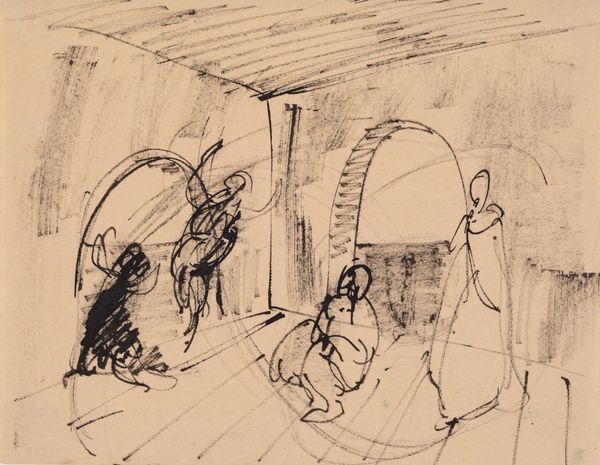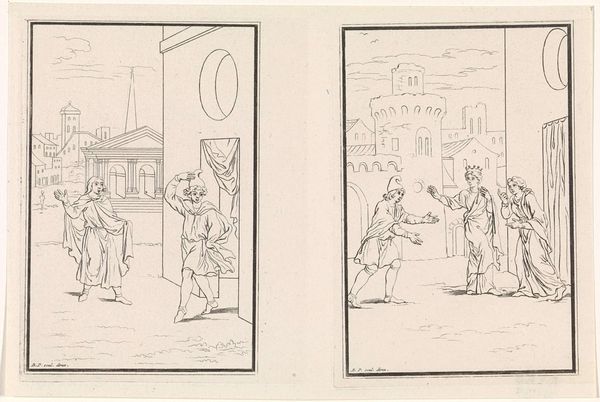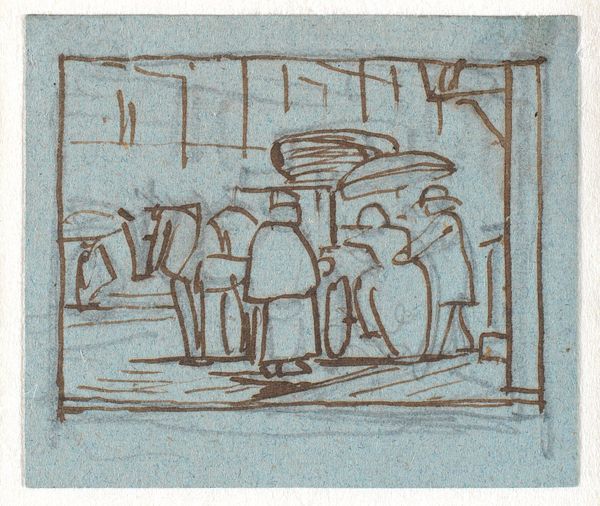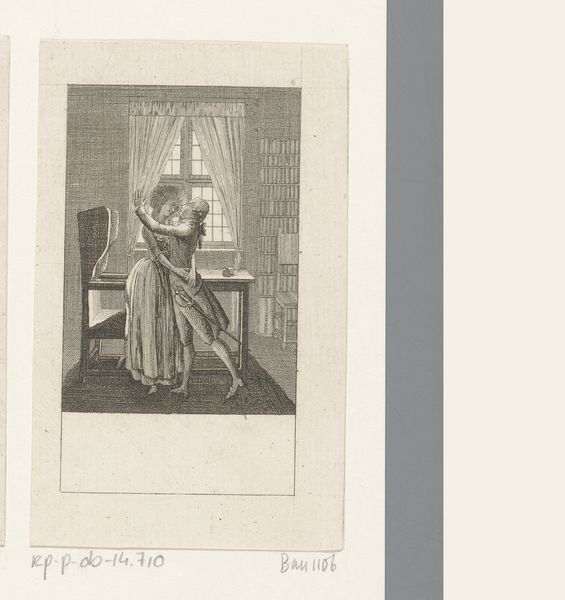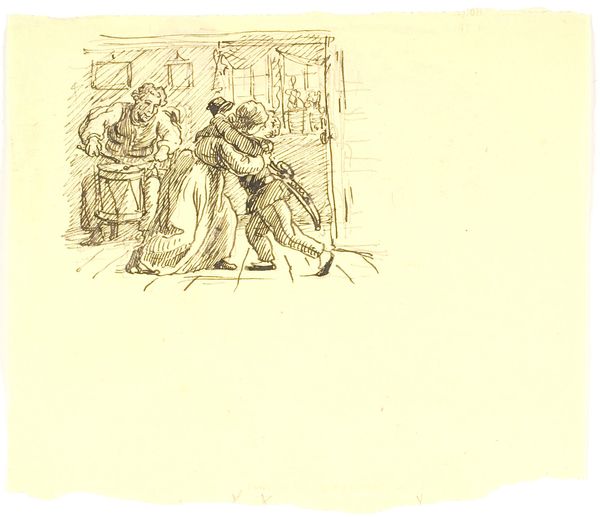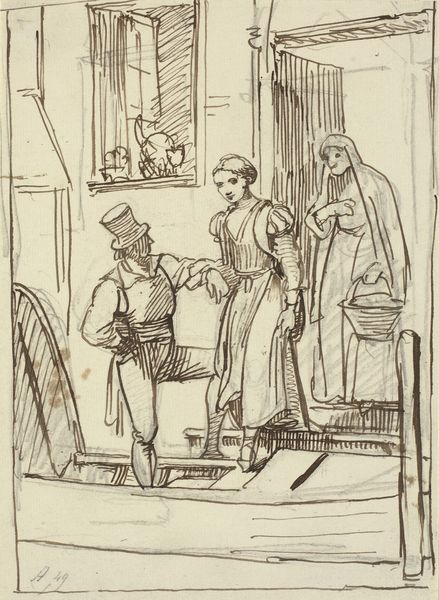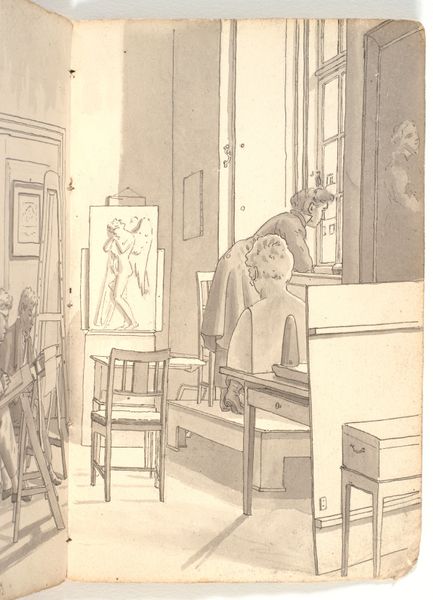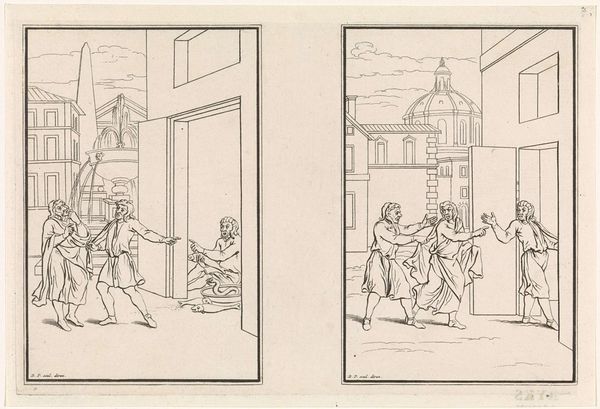
Schets van vrouw met kind en schets van vegende of dweilende vrouw Possibly 1798 - 1799
0:00
0:00
jurriaanandriessen
Rijksmuseum
drawing, paper, ink, pencil
#
drawing
#
aged paper
#
homemade paper
#
paper non-digital material
#
sketch book
#
figuration
#
paper
#
personal sketchbook
#
ink
#
sketchwork
#
pencil
#
sketchbook drawing
#
genre-painting
#
storyboard and sketchbook work
#
fashion sketch
#
sketchbook art
Dimensions: height 100 mm, width 186 mm
Copyright: Rijks Museum: Open Domain
Curator: Looking at this ink and pencil drawing by Jurriaan Andriessen, tentatively dated between 1798 and 1799, one immediately notices its fragmented nature. It's a diptych on paper depicting domestic scenes, housed within a sketchbook. Editor: Yes, "Sketch of Woman with Child and Sketch of Sweeping or Mopping Woman," is evocative, but melancholic. The grey ink wash against the aged paper lends it a ghostlike quality. There's something about the angular lines of the architecture that almost traps the figures. Curator: It's fascinating how Andriessen captures the realities of domestic life in the late 18th century. The figure on the left, a woman tending to a child, contrasts with the figure on the right, engaged in the labor of cleaning. It speaks volumes about the expected roles within a household during that time. Editor: Agreed. The contrast is striking. From a purely formal perspective, consider how he divides the composition with a vertical stroke, emphasizing this separation. The geometric rendering of space adds tension. Note also the delicate hatching used to describe form; he is a master of minimal line to define interior. Curator: And the settings, although spare, reveal different zones of domestic activity. In the first panel, one imagines the seated figures a waiting area in front of an important room; in the other, we sense this mopping woman’s activity sustains an entirely other section of the domestic scene, implying perhaps a private or intimate corner to the right with the linen chest. These depictions offer insights into how spaces were allocated and used, which speaks to societal structures too. Editor: I am interested also how Andriessen leaves so much unsaid, implying how his drawing relies on suggestion, relying on our cognitive drive to "fill the gaps." What would that cleaning woman want? Is there perhaps narrative implied here as well, like film storyboarding? Curator: Andriessen, through these glimpses, allows us a privileged, unfiltered view into 18th-century life, documenting both the nurturing and toiling that sustained the domestic sphere. It gives insight into class, labor and family dynamic during this time period. Editor: Indeed. And as a collection of compositional strokes and marks, we also appreciate this as simply a good and beautifully rendered visual document.
Comments
No comments
Be the first to comment and join the conversation on the ultimate creative platform.
